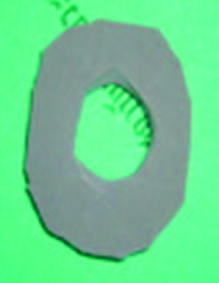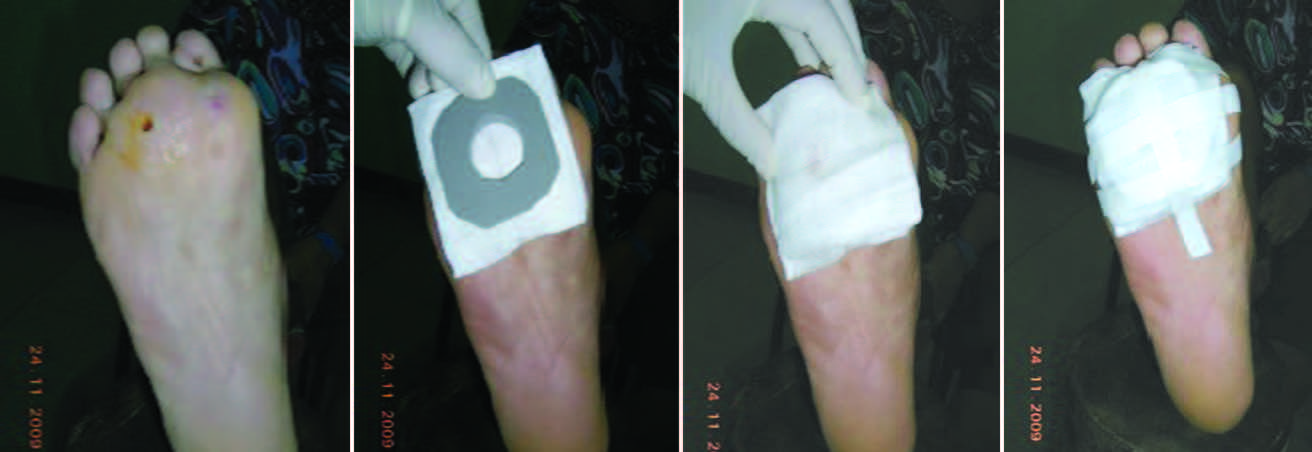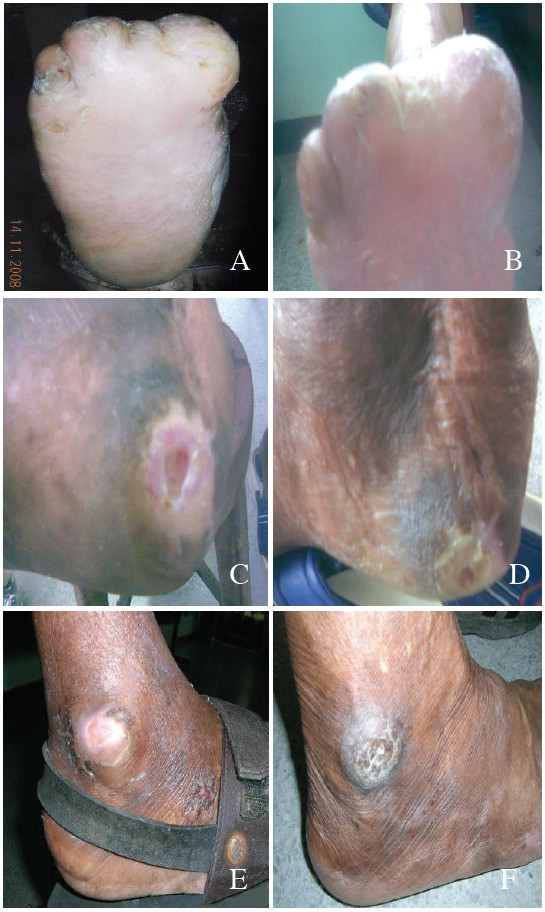Among patients affected by leprosy who have attended the anesthesia skin Out Patient Department (OPD) of Raj Pracha Samasai Institute (RPSI), it was found that the most common ulcer experienced was the chronic plantar ulcer. The average time patients affected by leprosy had suffered from this type of ulcer was 5 years. As it takes a long period of time to treat plantar ulcers, this has unavoidably affected the quality of life of patients affected by leprosy. This research was undertaken to study the effectiveness of felted foam dressing in curing chronic plantar ulcer. This quasi experimental research was conducted by using the one group pre-test post-test design to compare the effectiveness of ulcer care in leprosy patients who lived at the leprosarium of RPSI and who had received ulcer care services at the chronic ulcer clinic of the anesthesia skin OPD of RPSI.
Steps in the treatment of ulcers:

Figure 1: Felted foam dressing (Rubber Ring)

Figure 2: Stages of felted foam dressing

Figure 3A-F: examples of the study subjects before and after treatment with felted foam dressing
Data analysis was done using software computer programs and frequency was to display personal information. A Paired-Sample was used to identify the correlation of pre and post size of ulcers. One Way Anova and Independent Sample t-test were used to analyze correlation between contributing factors and duration taken for ulcer curing. Pearson Correlation Coefficient was used to analyze the correlation between age and duration taken for ulcer curing. A p-value of < 0.05 was considered indicative of a statistically significant difference or association.
After intervention, the sizes of ulcers of the study subjects were significant smaller than before. Most of study subjects’ ulcers were cured (96.9%) by the eighth week. There was only one patient with a 20mm ulcer that was not completely cured; 87.5% of study subjects were satisfied with the treatment. There was a significant positive association between the patient’s marital status and the size of plantar ulcer before intervention, and the time it took for the ulcer to be cured. There was also a significant positive association between age and the time it took for the ulcer to be cured.
It was suggested that to provide quality service to persons affected by leprosy who have chronic plantar ulcers, regular wound assessments should be performed. To establish sustainable services with continual wound assessment, feet health records should be produced for patients who have plantar ulcers. Further experimental studies should be carried out to compare the effectiveness of applying felted foam dressings between control and experimental groups or to compare the effectiveness of different wound care dressings. The attitude and behavior towards self-care of study subjects should also be included as an expected contributing factor in the further study.